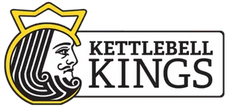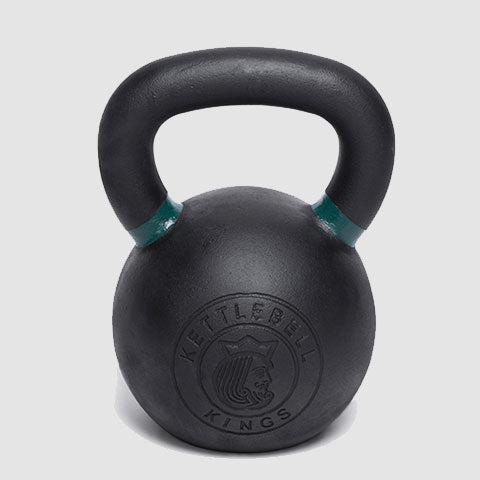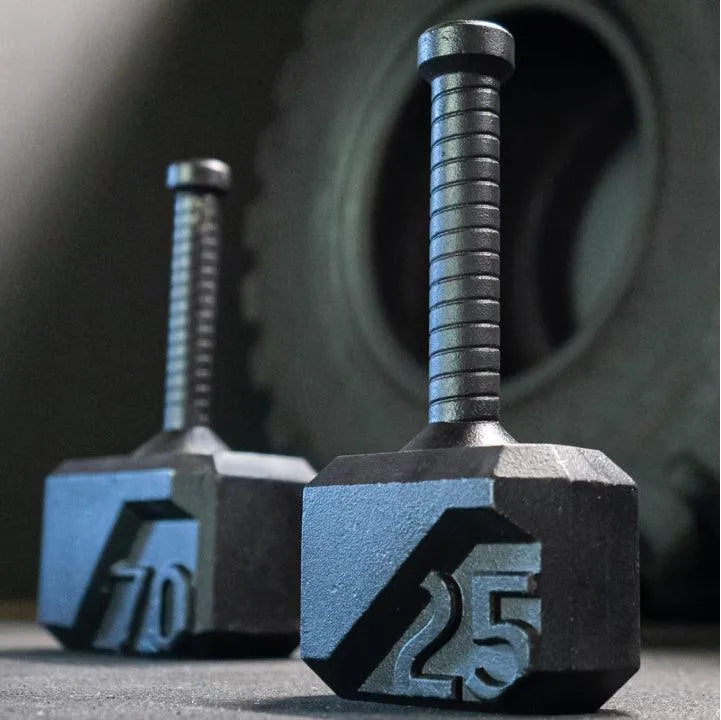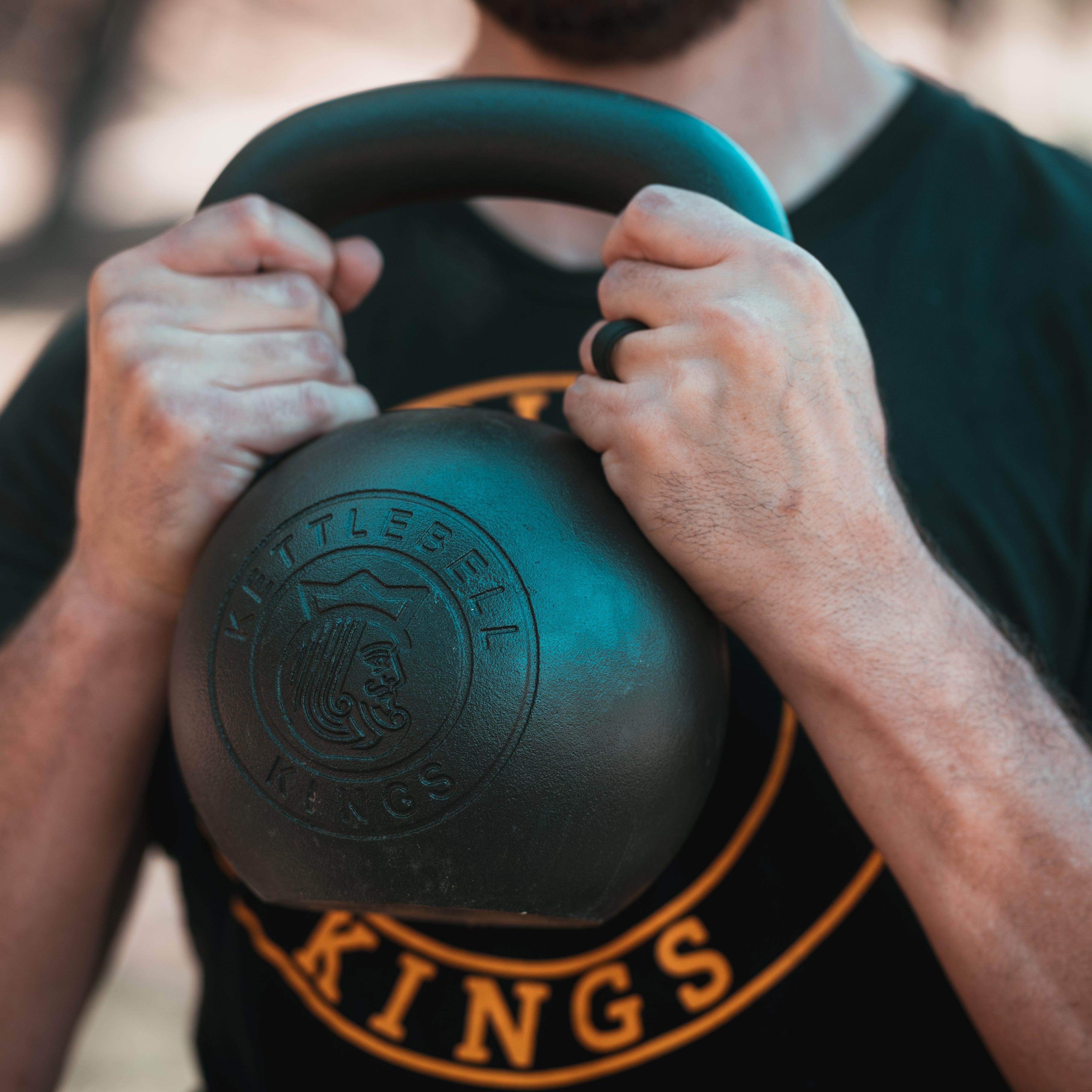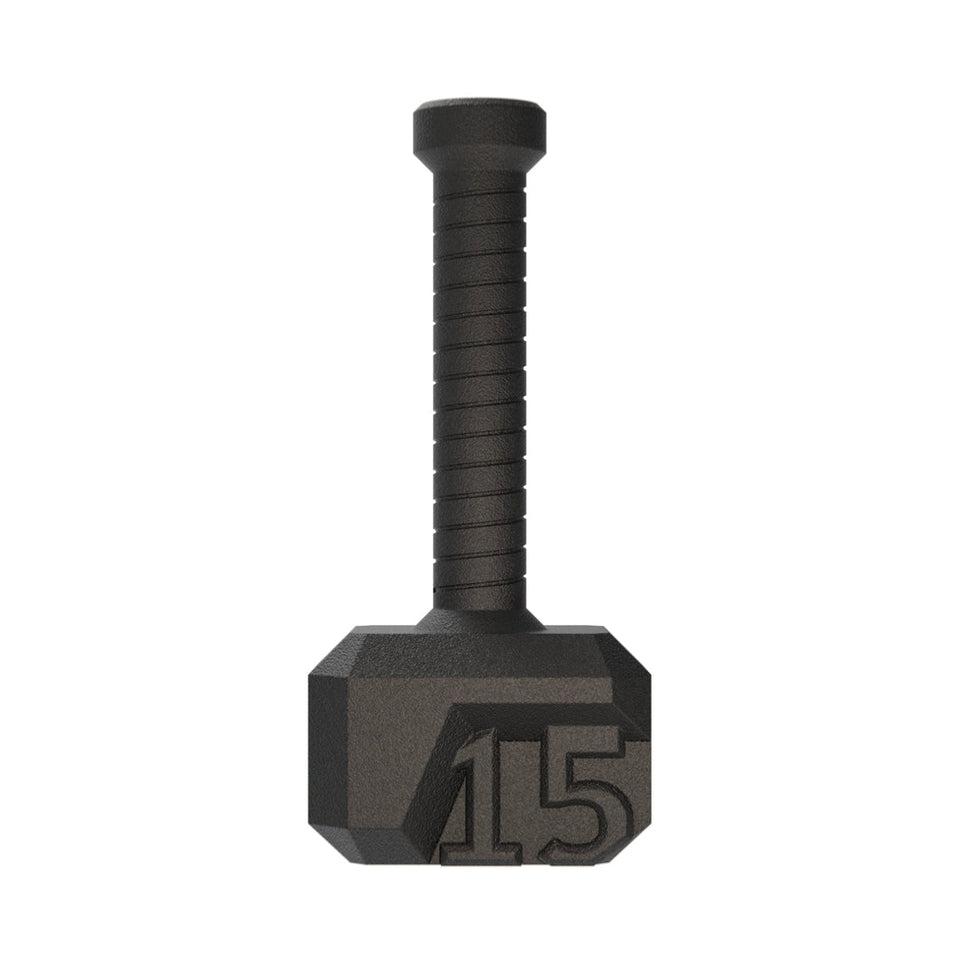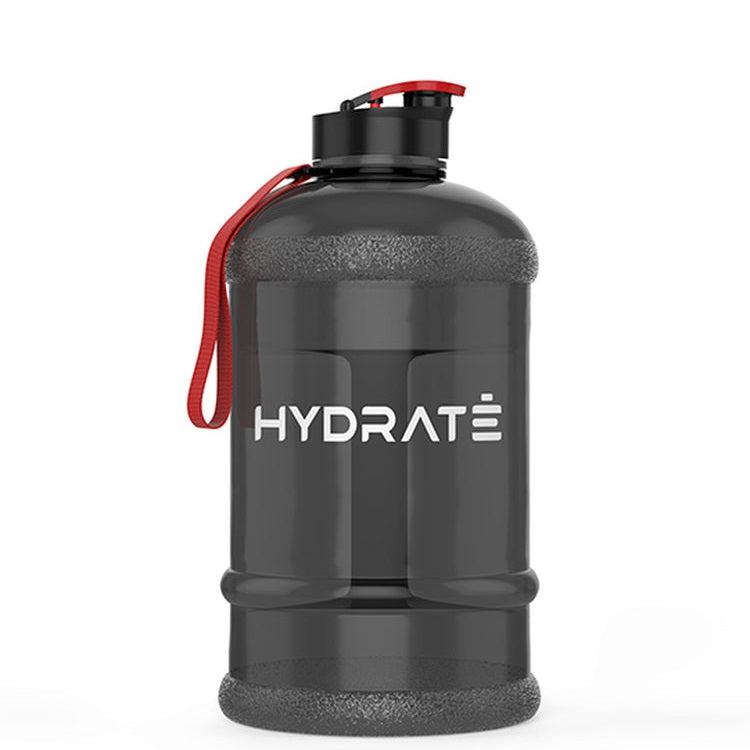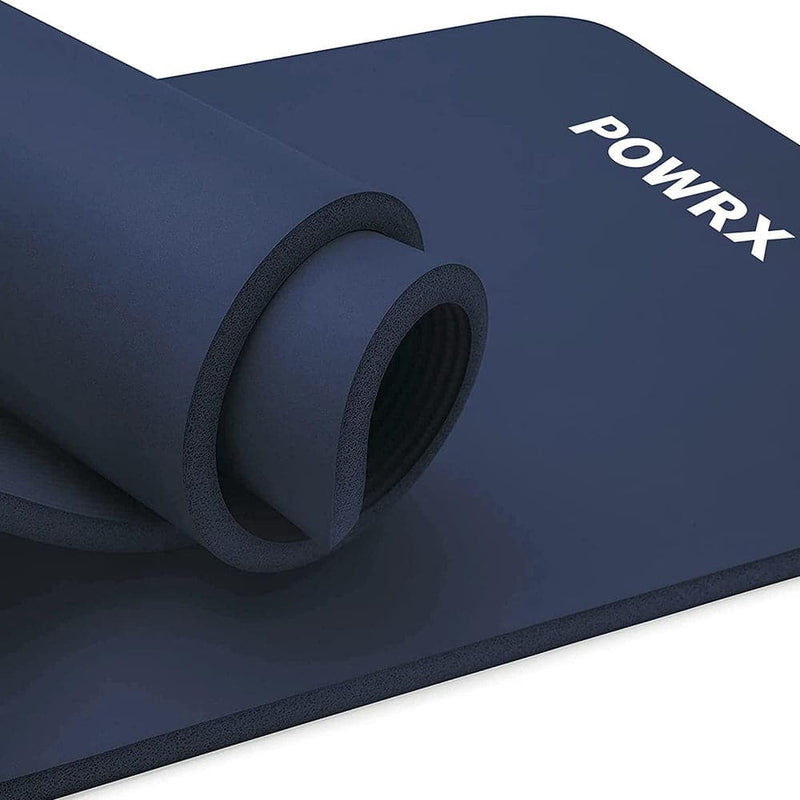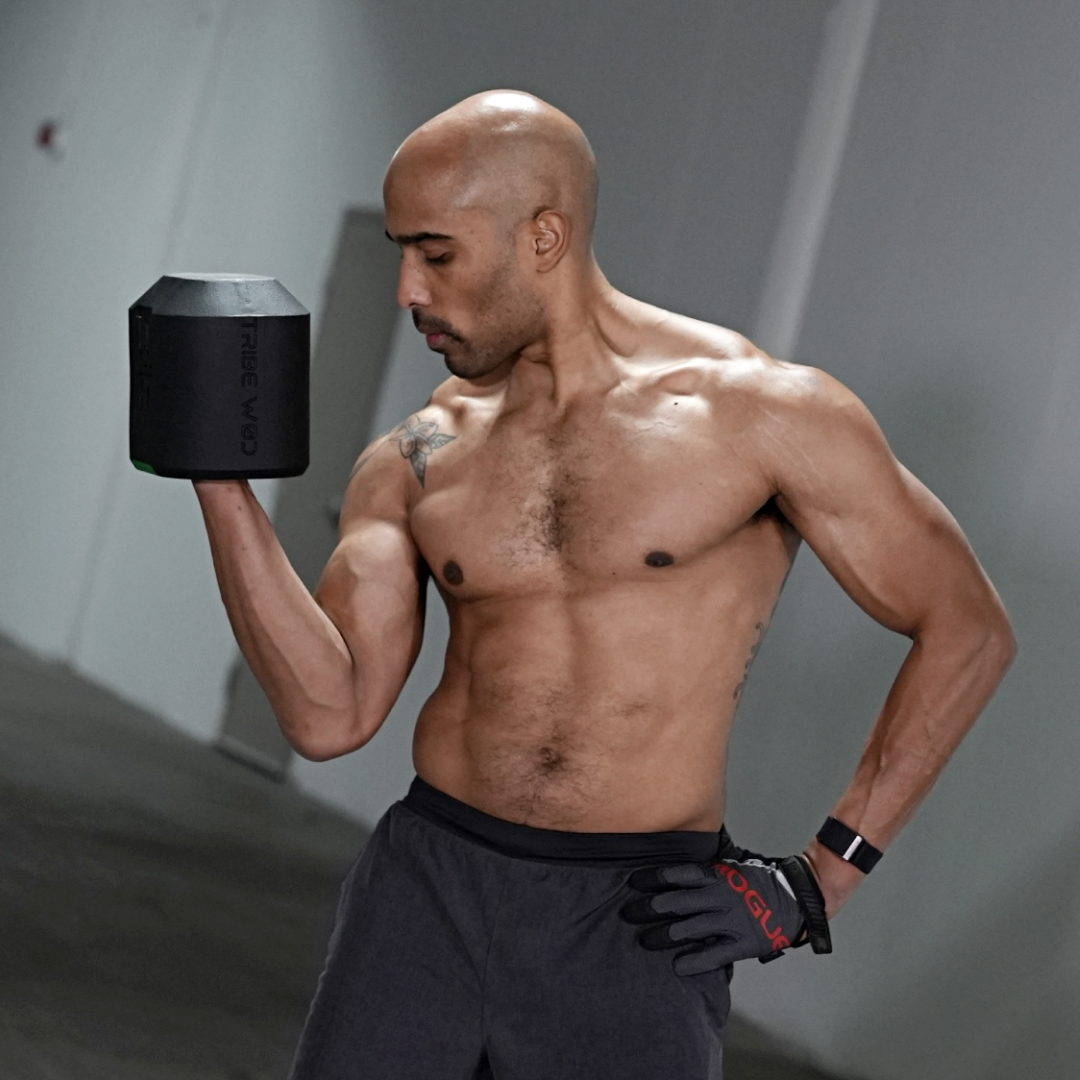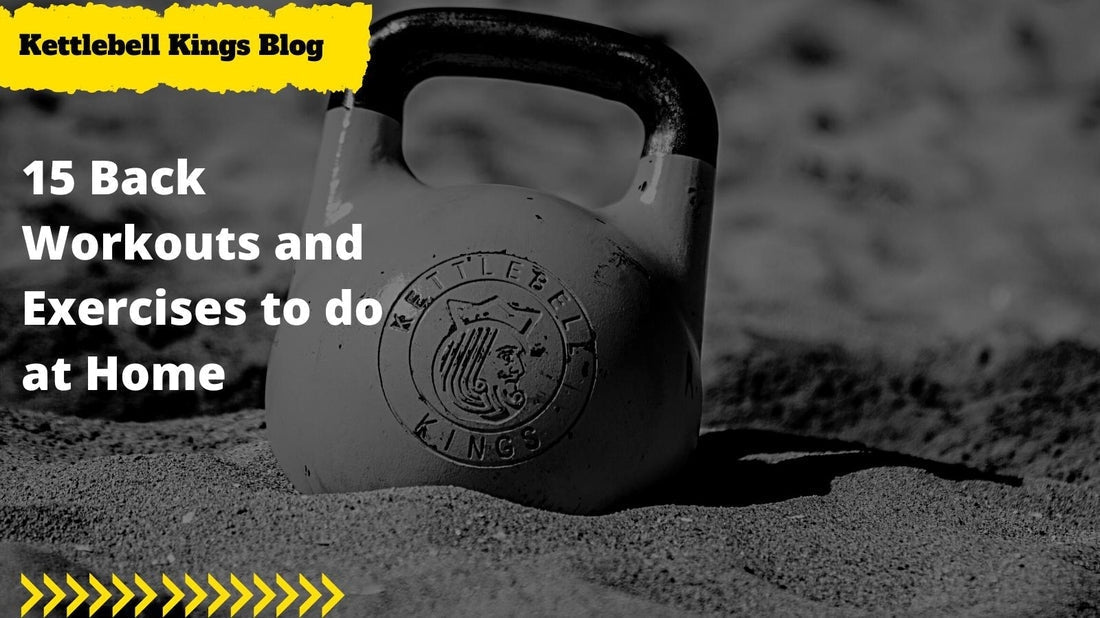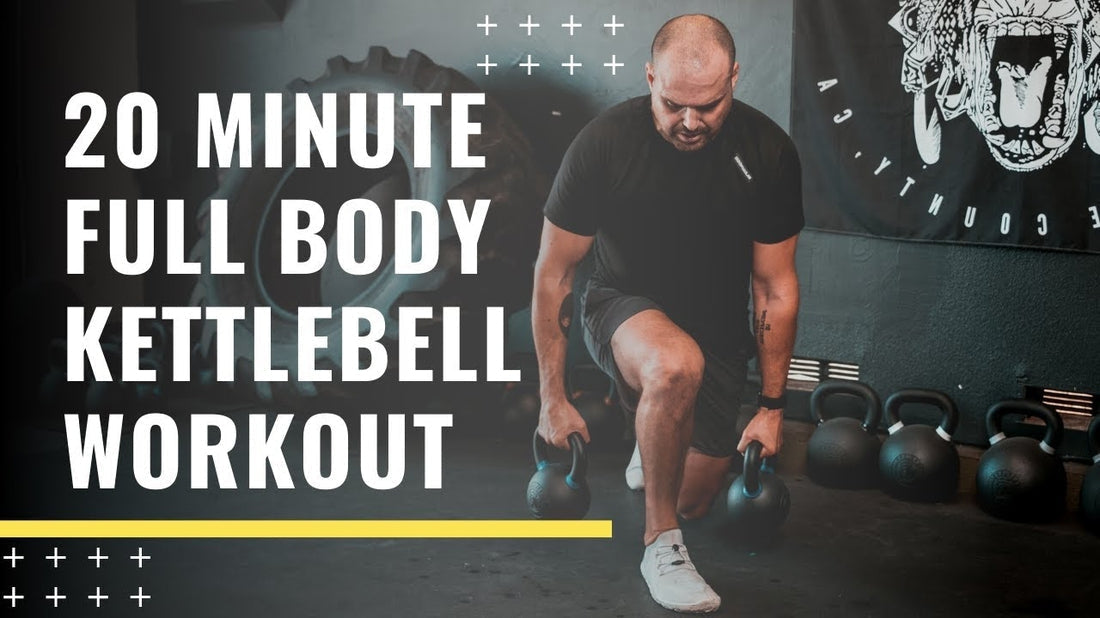Kettlebells are a popular choice for strength training with their high efficiency and variety. If you’re not sure whether kettlebells could be a game changer for your lifestyle, keep reading to learn about 17 different ways you may be able to improve your fitness in only about 10 minutes.
Why Kettlebells Are A Great Piece of Equipment
- Kettlebells are a great piece of fitness equipment for everyone. They are perfect for people of all fitness levels, from beginners to experienced athletes.
- Kettlebells offer a wide variety of workout options that are fun and challenging. You can work your entire body with kettlebell workouts, including core, muscular strength, and cardio abilities.
- Kettlebells are also relatively easy to transport, which makes them a great option for exercisers who want to keep their gym membership flexible. All you need is a space to store your kettlebells!
What Benefits Can You Get From Kettlebell Workouts?
There are a lot of benefits that you can get from kettlebell workouts. These workouts can help you to improve your strength, flexibility, and coordination.
Strength training is one of the most important things that you can do for your health. Kettlebell workouts can help you to increase your strength and muscle mass. They also promote muscle endurance and functional fitness.
Kettlebell workouts are also great for improving your flexibility. Kettlebells are very versatile tools, which means that they can be used for different types of exercises. This makes them ideal for improving your range of motion and flexibility.
Finally, kettlebell workouts are good for improving your coordination. This is because they require you to use all of your muscles at the same time. By doing these workouts, you will improve your coordination and balance skills.
What are the Kettlebell Training Injury Risks?
Kettlebell training is a great way to improve your fitness level and tone your muscles. However, like any form of exercise, kettlebell training can also cause injury. Here are some of the risks of kettlebell training injuries you should keep in mind:
- Kettlebells can cause strains and tears in the muscles and tendons around the shoulder, neck, and elbow.
- Kettlebells can also cause fractures in the bones.
- Kettlebells can also cause damage to the cartilage in the knee.
- Kettlebells can cause joint instability, which can lead to further injuries. If you're injured while kettlebell training, seek immediate medical help.
You might be able to reduce your risk of injury by following these guidelines
- Warm up before you start kettlebell training. This will help prevent muscle strain and injury
- Use a weight that is appropriate for your level of fitness. Start with light weights and gradually increase the weight as you become stronger
- Make sure to keep your wrists straight when you lift the kettlebells. This will prevent injuries to the wrists and hands
How To Use Different Styles Of Kettlebell Moves?
Kettlebell workouts can be used by everyone, regardless of their fitness level. There are different styles of kettlebell exercises that can be used to target different parts of the body.
Different styles of kettlebell workouts for men and kettlebell workouts for women can be used for multiple purposes. For example, some people use kettlebell workouts to lose weight, while others use them to improve their conditioning. It's up to you which style of workout you want to try and see results from.
List of Kettlebell Workouts That You Can Try Anywhere
Here is a list of Kettlebell exercises that you can practice anywhere to stay fit and in shape:
Kettlebell Slingshot
- Muscles Kettlebell Slingshot Works: Upper Trapezius, Deltoids, Subscapularis, Infraspinatus, Obliques, Abdominals, Biceps, Triceps, Forearms
How to do a Kettlebell Slingshot:
- Keep your feet shoulder-width apart and hips still.
- Raise your chest and keep your shoulders square.
- Keep your arms as straight as possible and shoulders down while rotating the kettlebell around in a circular motion around your hips (pass it from one hand to the other).
- Keep everything nice and tight, core/abs/glutes by keeping everything motionless except for your arms.
- Summary: This exercise is a good way to get you accustomed to the movement of the kettlebell in your hand and can be used as an active recovery rather than resting between exercises.
Kettlebell Halo
- Muscles Kettlebell Halo Works: Upper Trapezius, Deltoids, Subscapularis, Infraspinatus, Obliques, Abdominals, Biceps, Triceps.
How to do a Kettlebell Halo
- Keep the elbows tucked in and close to the body.
- Ensure that the kettlebell is as close to your neck as possible
- The closer you can keep it, the more upside of working on your shoulder mobility.
- Summary: Warm up, stretch and strengthen your shoulders with this exercise.
Kettlebell Turkish Get Up
- Muscles Kettlebell Turkish Get Up Works: Deltoid, TLumborum, Latissimus Dorsi, Gluteus Maximus, Hamstrings, Adductor Magnus, Abdominals, Quadriceps Femoris, Trapezius, Rhomboids, Erector Spinae, Supraspinatus, Subscapularis, Infraspinatus, Triceps, Quadratus, Obliques (Internal & External), Serratus Anterior.
How to do Kettlebell Turkish Get Up
- Lie on your left side in a fetal position.
- Put the kettlebell on the ground in front of your chest.
- Grab the handle with an underhand grip in your left hand. If the weight is heavy for you, hold it with both hands, using an overhand grip with the right.
- Roll onto your back, with the kettlebell at your side.
- Bend your left knee to approximately 70 degrees, place your left foot flat on the floor, and extend your right leg at a 45-degree angle from your body.
- Press the kettlebell straight up and directly over your chest, until the arm is fully extended.
- Summary: One of the key kettlebell workouts for men and kettlebell workouts for women that challenge your core and mobility as you stand up and lie back down again while holding the kettlebell.
Kettlebell Goblet Squat
- Muscles Kettlebell Goblet Squat Works: Gastrocnemius, Hip adductors, Upper Trapezius, Gluteus Maximus (Medius & Minimus), Hamstrings, Adductor Magnus, Quadriceps Femoris, Abdominals, Quadratus Lumborum, Erector Spinae.
How to do Kettlebell Goblet Squat
- Grab a kettlebell and hold it at chest level.
- Set your feet in a squat stance, so that the heels are at hip width or slightly wider.
- Sit the hips down over the heels, making sure to pull your groin down between the thighs.
- As you descend, be sure to support the weight so that it stays above your chest line.
- At the bottom of the squat, you should be able to contract your back muscles to raise your chest high with the weight at that level.
- Pause at the bottom of the squat so that you can feel your body needing to resist forward flexion.
- When standing up, you need to actively lift the chest and the weight so that they both stay slightly higher than chest height. It is imperative that your hips do not shoot backward.
- Summary: Kettlebell Goblet squats are an easy exercise that can be done with any weight, but you should not underestimate this amazing exercise.
Kettlebell Pistol Squat
- Muscles Kettlebell Pistol Squat Works: Gluteus Maximus (Medius & Minimus), Hamstrings, Hip adductors, Upper Trapezius, Abdominals, Quadratus Lumborum, Biceps, Erector Spinae, Adductor Magnus, Quadriceps Femoris, Gastrocnemius.
How to do Kettlebell Pistol Squat
- Hold the kettlebell with both hands under your chin.
- Lift one leg off the floor and squat down with the other.
- Without letting your leg touch the floor, drive through the heel and bring yourself back up to the standing position.
- Summary: The Kettlebell Pistol Squat is a challenging workout for your strength, flexibility, and balance.
Kettlebell Single Arm Deadlift
- Muscles Kettlebell Single Arm Deadlift Works: Gastrocnemius, Hip adductors, Gluteus Maximus (Medius & Minimus), Hamstrings, Upper Trapezius, Abdominals, Quadratus Lumborum, Erector Spinae, Spinal Erectors, Adductor Magnus, Quadriceps Femoris
How to do a Kettlebell Single Arm Deadlift
- Stand at shoulder width, knees bent, toes pointing forwards. The upper body bends forward with a straight back. One hand grabs the kettlebell.
- Extend the legs and bring the hips forward to lift the kettlebell.
- Bend the knees and bring your buttocks back to lower the kettlebell back down.
- Summary: The kettlebell deadlift strengthens the glutes, hamstrings, and quads. This starting exercise should be done before advanced exercises for example kettlebell swing.
Kettlebell Single Leg Deadlift
- Muscles Kettlebell Single Leg Deadlift Works: Hip adductors, Trapezius, Latissimus Dorsi, Gluteus Maximus (Medius & Minimus), Hamstrings, Gastrocnemius, Rhomboids, Abdominals, Obliques, Quadratus Lumborum, Erector Spinae, Adductor Magnus, Quadriceps Femoris.
How to do a Kettlebell Single Leg Deadlift
- Hold a kettlebell in one hand, hanging to the side.
- Stand on one leg, on the same side that you hold the kettlebell.
- Keeping that knee slightly bent, perform a stiff-legged deadlift by bending at the hip, and extending your free leg behind you for balance.
- Continue lowering the kettlebell until you are parallel to the ground, and then return to the upright position.
- Repeat for the desired number of repetitions.
- Summary: This is a great exercise that challenges your core muscles while working the left and right sides of the body. It improves your balance.
Two-Handed Kettlebell Swing
- Muscles Two-Handed Kettlebell Swing Works: Forearms, Hamstrings, Gluteus Maximus, Deltoids, Latissimus Dorsi, Erector Spinae, Quadriceps Femori, Trapezius, Abdominals, Rhomboids.
How to do Two Handed Kettlebell Swing
- Put the Kettlebell about a foot in front of you.
- Grab the Kettlebell with both hands, bending your hips with a slight bend in your knees.
- Pick the kettlebell and let it swing between your legs and then swing the Kettlebell forward to about chest level, using a hip-snapping motion.
- Let the kettlebell drop without any restriction and hike it between your legs.
- Summary: The king of all kettlebell exercises not just works your arms and legs but also engages almost every muscle in your body.
Single Arm Kettlebell Swing
- Muscles Single Arm Kettlebell Swing Works: Hamstrings, Gluteus Maximus, Obliques, Abdominals, Forearms, Erector Spinae, Quadriceps Femoris, Rhomboids, Trapezius, Deltoid, Latissimus Dorsi.
How to do Single Arm Kettlebell Swing
- Hold the kettlebell with an overhand grip with your dominant hand for the first round to feel more comfortable
- Let the kettlebell hang in front of your thighs, allowing your wrist to lightly touch your leg
- Extend the non-dominant hand out before you as steady rest for balance
- Lean forward slightly. Using your hips, swing the kettlebell up to eye level
- With control, swing it down, then up again
- After a few reps, pause, then switch hands
- Summary: It's more challenging for your core muscles and shoulder stability than a two-handed swing, but tougher on your grip strength too!
Kettlebell Thruster:
- Muscles Kettlebell Thruster Works: Gluteus Maximus (Medius & Minimus), Gastrocnemius, Hip adductors, Trapezius, Hamstrings, Adductor Magnus, Quadriceps Femoris, Abdominals, Quadratus Lumborum, Erector Spinae, Deltoid, Infraspinatus, Triceps, Serratus Anterior, Supraspinatus, Subscapularis.
How to do Kettlebell Thruster
- Keep your grip on the handles while you hold both kettlebells so their weight is resting on the back of your shoulders.
- Slightly bend your knees and squat down, keeping your legs in line with your shoulders.
- Drive through your legs, extending them as you straighten them so that you are raising the kettlebells above your head.
- Summary: Kettlebell Thruster is a challenging workout that will help you from the head to toe and strengthen your heart and lungs.
Kettlebell Clean and Press
- Muscles Kettlebell Clean and Press Works: Gluteus Maximus, Hamstrings, Adductor Magnus, Quadriceps Femoris, Trapezius, Biceps, Deltoid, Supraspinatus, Subscapularis, Infraspinatus, Triceps, Erector Spinae, Abdominals, Serratus Anterior.
How to do Kettlebell Clean and Press
- Hold your kettlebells in the proper position, with your knees slightly bent and your feet shoulder-width apart.
- In one swift movement, slightly jump off the ground and raise your arms to extend above your head.
- Land softly on your feet. Keep your knees bent as though you're doing a squat and extend your arms straight over your head.
- Summary: The Kettlebell Clean and Press is a combination of two exercises to build strength in both the upper and lower body. It is a challenging, full-body exercise.
Kettlebell High Pull
- Muscles Kettlebell High Pull Works: Rhomboids, Trapezius, Deltoid, Latissimus Dorsi, Hamstrings, Gluteus Maximus, Erector Spinae, Quadriceps Femoris, Abdominals, Forearms.
How to do Kettlebell High Pulls
- Stand with your legs wider than shoulder-width and place a kettlebell between them.
- Get into a squatting position, grab the kettlebell with both hands, and make sure to bend your knees to 90 degrees.
- Extend through your legs and raise the kettlebell to your chin, so your arms bend and elbows are in line with the top of your head. Squat down and repeat.
- Summary: This kettlebell exercise will elevate your heart more quickly than almost all other exercises.
Kettlebell Snatch:
- Muscles Kettlebell Snatch Works: Gluteus Maximus, Hamstrings, Trapezius, Abdominals, Deltoid, Adductor Magnus, Quadriceps Femoris, Gastrocnemius, Triceps, Erector Spinae, Forearms, Supraspinatus, Subscapularis, Infraspinatus, Rhomboids, Serratus Anterior.
How to do Kettlebell Snatch:
- Holding a kettlebell in one hand between your legs, squat down until your thighs are parallel to the floor.
- Push your hips forward and rise on your toes, at the same time rotating your arm so that you are raising it well above your head.
- Squat down while returning the weight to the start position. Repeat it with one and then swap the sides.
- Summary: Master the Kettlebell Snatch swing by driving the kettlebell overhead using every muscle in your body. This exercise requires good timing and a high level of kettlebell skill to master.
Kettlebell Row:
- Muscles Kettlebell Row Works: Latissimus Dorsi, Gluteus Maximus, Trapezius, Erector Spinae, Hamstrings, Gastrocnemius, Teres Major, Rhomboids, Posterior Deltoids, Biceps, Obliques (Internal & External), Transverse Abdominis.
How to do Kettlebell Row:
- Bend your front knee and keep your back straight, and thrust your hips forward so that the kettlebell handle is in front of you.
- Lift your elbow to keep the arms parallel to the floor until it reaches your ribcage.
- Keep your core engaged and back straight throughout the movement.
- Squeeze your lats at the top, hold briefly, then slowly lower the kettlebell until your arm is fully extended.
- Commit to 8-10 repetitions of this exercise for each side.
- Summary: Kettlebell Row Workout works on the back of the upper body, It is challenging for the core muscles due to the rotational forces caused by the kettlebell.
Kettlebell Windmill:
- Muscles Kettlebell Windmill Works: Gluteus Maximus, Hip Rotators, Subscapularis, Infraspinatus, Erector Spinae, Hamstrings, Deltoid, Supraspinatus, Trapezius, Serratus Anterior, External Oblique, Quadratus Lumborum.
How to do Kettlebell Windmill:
- Begin with your right foot directly underneath your hip and your left leg slightly angled out, holding a weight overhead in the right hand.
- Find the correct grip by placing your left hand between the inner thigh and hip, with the palm up.
- When ready, rotate your torso towards the floor and plant your left shoulder forward as you descend.
- Keep your balance by holding on to the support beam at the bottom of the windmill with one hand and stretching out your left leg as you do.
- To assume the finished and upright position, contract the right glute and hip to extend the hips forwards.
- Summary: Kettlebell Windmill improves your shoulder and hip mobility. This is a great exercise for strengthening your core muscles too!
Kettlebell Clean:
- Muscles Kettlebell Clean Works: Gluteus Maximus, Hamstrings, Upper Trapezius, Biceps, Abdominals, Adductor Magnus, Quadriceps Femoris, Erector Spinae, Forearms.
How to do Kettlebell Clean:
- Set up as if you were to perform a single-arm swing. This movement is done by holding the kettlebell in front of your toes and then popping it up when fully extended. Keep your weight on the balls of your feet throughout the motion.
- Reach down for the kettlebell by hinging at the hips and maintaining hamstring tension. Squeeze its handle to activate your shoulder blades.
- Swing the bell back between your legs, maintaining a neutral spine.
- Extend knees and hips to propel the bell upward by squeezing glutes and abs. Retract the shoulder slightly so the bell gets into a more vertical trajectory. Keep arms close to the body for full reach.
- When the kettlebell is at your chest, it should softly roll around your wrist and softly land on your forearms. In the racked position, the body of the kettlebell is resting on your forearm, and your elbow stays connected to your torso. Your core should remain tight.
- Get into the starting position with your feet close to the kettlebell. As you swing the kettlebell in an arc, keep your arm straight and make sure the kettlebell moves close to your body on the backswing. Throughout the movement, keep your upper arm connected to your torso.
- Commit to 8-10 repetitions of this exercise.
- Summary: The Kettlebell clean take the movement from the floor to the racked position in one smooth movement. This workout works on almost all the muscles of the body.
Kettlebell Overhead Press:
- Muscles Kettlebell Overhead Press Works: Deltoid, Supraspinatus, Subscapularis, Infraspinatus, Triceps, Erector Spinae, Trapezius, Abdominals, Serratus Anterior.
How to do Kettlebell Overhead Press:
-
- Start by holding a kettlebell at chin height with your wrist straight and your elbow directly below your wrist.
- Press the weight directly overhead, then lower it slowly under control.
- If you can’t control the kettlebell, you either have weak wrists or are trying to press in an inefficient path
- Reduce the weight to perfect the technique, then add weight once you can do a set of six presses.
- Summary: Kettlebell overhead press is a good option for developing brute strength in the shoulder muscles. It keeps your whole body tight for additional muscle activation.
What Are the Best Kettlebell Exercises?
Now, we have a good list of kettlebell workouts that can be done by both men and women, but you might wonder which workout is good for you, it completely depends on your fitness goals and physical strength, but kettlebell swing, Turkish get-up, goblet squat, and the clean and press are some of the most popular.
How Much Kettlebell Workout you Should do in a Week
Different people respond to exercise differently but usually, 3-5 workouts per week are about right for most people. The more intense the workouts, the fewer rest days are needed afterward.
